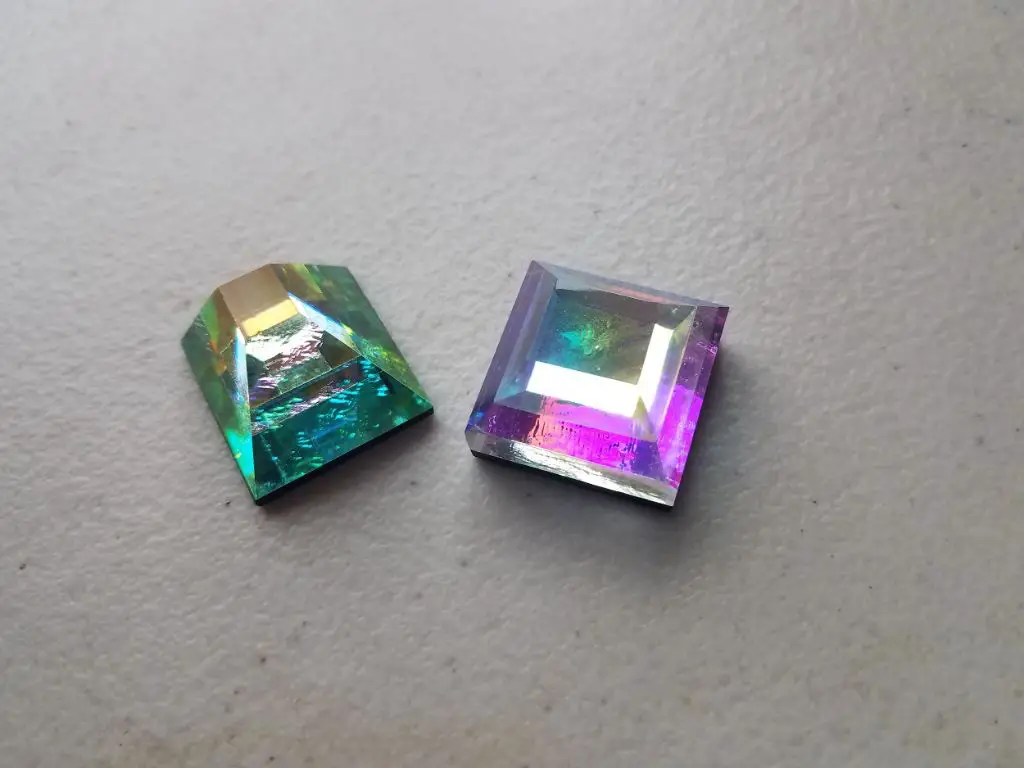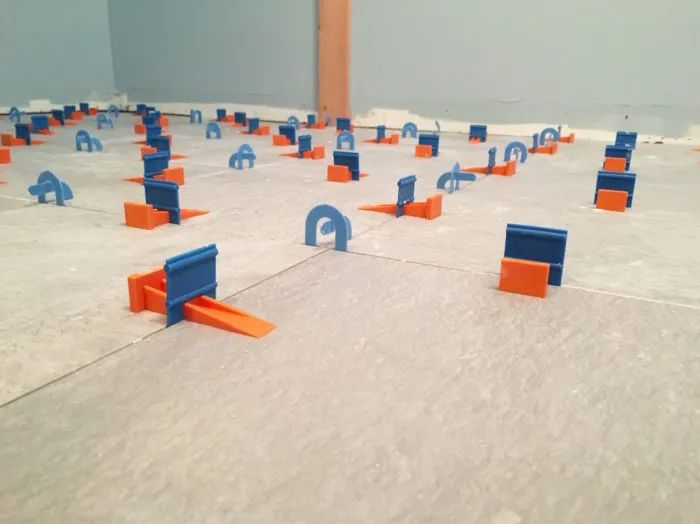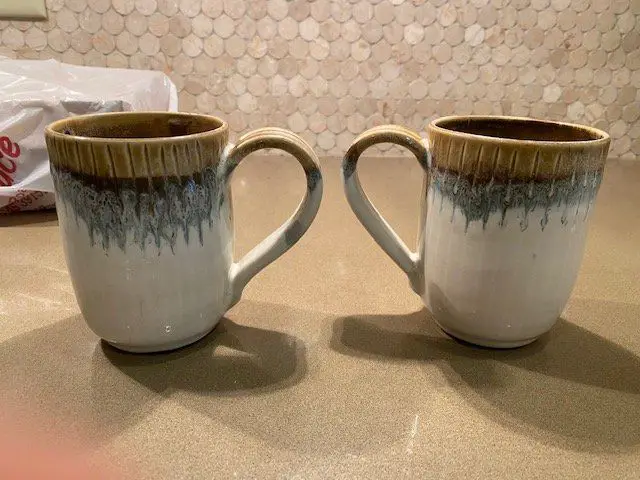What Can You Fuse In Between Glass?
Glass fusing is the process of joining compatible glass pieces together through heating in a kiln until the glass fuses together at approximately 1480°F (804°C) (The Crucible, 2022). This allows the separate glass components to combine into one solid joint piece of glasswork.
There are several techniques used in glass fusing, including full fusing where glass pieces are completely melted together, tack fusing where the glass is only partially melted, and slumping where fused glass is re-heated over a mold to create a specific shape (Wikipedia, 2023).
Glass fusing allows artists and hobbyists to create a wide variety of objects including jewelry, dishes, sculptures, wall art, and more. By combining colored glass pieces through fusing, beautiful and unique glasswork can be produced (YouTube, 2017).
Metals
Metals can be fused between layers of glass to create beautiful designs and effects. However, not all metals behave the same when heated, so it’s important to choose the right types of metals for glass fusing projects (Fusion Headquarters). Some popular metals used in glass fusing include:
Copper: Copper can produce vibrant colors when fused with glass, ranging from rich gold and red tones to turquoise and green. It has good compatibility with most types of glass. Copper is very malleable and easy to cut into shapes (Glass with a Past).
Silver: Pure silver yields reflective finishes and will not oxidize or tarnish when properly fused. Fine silver sheet or wire is commonly used. The high cost of silver limits its use to small accent pieces (Fusion Headquarters).
Gold: Gold leaf or powder can create a lustrous gilded effect. It is compatible with most glass types. Due to the high cost, gold is usually used sparingly in glass fusing projects (Glass with a Past).
Other metals like brass, bronze, steel, and nickel alloys can also be successfully fused between layers of glass. The key is preventing oxidation by sandwiching metals between glass layers and controlling the temperature and duration of firing (Fusion Headquarters). With proper technique, metals can add beautiful accents to fused glass artworks.
References:
https://fusionheadquarters.com/product-category/glass-fusing-supplies-2/metals-2/
https://glasswithapast.com/knowledgebase/fusing-with-metal-inclusions/
Gems and Minerals
Many precious and semi-precious stones can withstand the high temperatures required for fusing glass. However, it’s important to research each stone’s properties before attempting to fuse it between layers of glass. According to warmglass.com, cubic zirconia is one of the only gems that can be directly fused into glass without pre-drilling holes. Other gems may crack or fracture under the heat due to thermal expansion differences between the glass and stone.

When fusing softer gems like opal or amber between glass, it’s essential to use a lower temperature kiln program to avoid burning or melting the organic stones. Precious stones like sapphires, rubies and emeralds can typically withstand fusing temperatures, but may appear darker or lose luster after firing. It’s recommended to consult jewelry references to research individual gem properties before fusing.
Overall, fusing gems in glass requires caution and testing to find the optimal temperature for each material. With care, metals and minerals can create beautiful accents between layers of glass. The striking visual contrast makes fused glass gems popular for jewelry and decorative pieces.
Organic Materials
One unique material that can be fused between layers of glass is organic matter such as flowers, leaves, and insects. When organic matter is encased in glass, it goes through a process called “burnout” where the organic material combusts and vaporizes when exposed to high heat, leaving behind empty space or ash residue in the glass.
It takes careful preparation in order to properly preserve organic materials in glass without damaging the glass itself. According to Harmony Stained Glass, the organic matter must be thoroughly dried first to remove all moisture which could cause cracking or breaking during fusing. Once dried, the organic material can be neatly arranged between two layers of glass before firing.
According to Glass Tips, firing schedules must be customized to accommodate burnout of the organic matter. The glass is heated slowly at first, up to 500°F, to allow the organic material to burn away completely before ramping up to a full fuse. Firing too quickly can trap expanding gases and cause bubbles or cracks in the glass. With careful firing, the organic material will burn away cleanly, leaving behind artistic negative spaces.
The effect of encasing organic materials in glass can be stunning, especially for delicate materials like flowers or leaves. As Jewelry Making How To notes, the translucent glass offers a glimpse of the ghostly organic material within, creating a one-of-a-kind fused glass piece.
Ceramics and Pottery
Shards and pieces of broken ceramics and pottery can be fused between layers of glass to create beautiful mixed media artworks. The irregular shapes and earthy textures of ceramic fragments contrast nicely with the smooth surface of melted glass. Vitrified ceramics that have been fired to high temperatures work best, as they are less prone to cracking from thermal shock during the glass fusing process. Avoid using unfired clay as it contains water and organic materials that will burn out and potentially cause cracking.
To incorporate pottery shards, first break or cut the ceramics into pieces less than 1 inch thick. Irregularly shaped shards often look more interesting fused in glass than geometrically cut pieces. Next, arrange the shard pieces in the design you want between layers of compatible glass. Using a kiln shelf, fire the glass stack according to the fuse schedule required by the glass type, up to a maximum temperature of 1480°F. The long, slow ramp up and down allows the glass and ceramic to expand and contract together, resulting in fewer cracks. With careful selection of durable ceramics and proper firing, you can successfully fuse beautiful shards and fragments into kiln-formed glass projects.
Photos and Paper
Fusing photos and paper in between layers of glass can create beautiful and sentimental works of art. Here’s an overview of how to fuse photos and paper into glass:
To start, you’ll need to print your photos or paper onto special fusible printer paper. This paper is coated with a material that prevents the ink from spreading when fused. There are a few brands of fusible photo paper such as Berger Specialty photo paper or Directions photo transfer paper. Print your image according to the manufacturer’s instructions.
Next, you’ll need to prepare the glass. Cut your glass to the desired shape and clean thoroughly. Place the printed photo paper ink-side down on top of the first layer of glass. Then place another layer of glass on top and fuse according to the instructions for your kiln and glass. Typical full fusing temperatures are around 1480°F (804°C).
The ink from the printed photo paper will transfer to the glass layers when heated, creating a detailed image sealed between the glass. The paper itself will burn away in the kiln. You can fuse multiple sheets of printed photos to create collages or montages.
Some tips when fusing photos in glass:
- Use heavier gauge glass like 6mm or 8mm.
- Opt for transparent or translucent glass rather than opaque colors.
- Full fusing temperatures work best.
- Consider adding dichroic glass, stringers or frit for added interest.
Fusing photos in glass allows you to create personalized art pieces and gifts from your favorite photos and papers. With the right materials and some glass fusing experience, you can immortalize your cherished memories in glass art. For a photo fusing in glass tutorial, check out this video: https://www.pinterest.com/annlarkin88/small-fused-glass-pictures/
Plastics and Polymers
Plastics and polymers can be fused between layers of glass, but extra care must be taken compared to other materials. Plastics have much lower melting points than glass, so the temperature of the kiln must be carefully controlled. Typical plastics like acrylics or polyethylene sheets start becoming molten at temperatures as low as 120°C, whereas glass fuses at temperatures from 500-1600°C depending on the type.
The fusing process can be used to encapsulate plastic items between layers of glass. This allows creating unique designs by embedding plastic pieces inside glass pendants, dishes, or sculptures. However, problems can occur if the plastic off-gases or burns at high kiln temperatures, leaving bubbles or discoloration in the finished glass piece. The plastic material must be stable at elevated temperatures. Some plastics like acrylic (PMMA) or polycarbonate can withstand glass fusing temperatures with minimal damage. But common plastics like PVC or polyethylene may burn or scorch unless specially formulated for high heat applications. Careful testing is required.
In summary, plastics and polymers can be fused between glass but require controlling the kiln temperature precisely to avoid burning or off-gassing issues. The plastic material must be high temperature resistant. When done properly, embedding plastics in fused glass allows for creative designs not possible with other materials. But the limitations require careful testing and temperature control.
Wood and Natural Materials
Fusing wood and other natural materials into glass can create beautiful and unique works of art. When selecting wood, it’s important to choose varieties that can withstand the high temperatures of the kiln without burning or charring. Some woods that work well include maple, poplar, birch, aspen, and bamboo. The wood should be kiln dried with a low moisture content. Avoid resinous softwoods like pine or cedar as they tend to scorch.
Other natural materials like leaves, flowers, seeds, nuts, shells, and dried grasses can also be encased between two sheets of glass. These organic materials will burn away in the kiln, leaving behind impressions and textures in the glass. Seashells such as sand dollars, starfish, clam shells, or scallop shells work well, as do tree bark, feathers, dried pods and seed heads. Be sure to clean materials thoroughly before fusing.
Source: https://www.pinterest.com/elementswoodcre/fused-glass-and-wood/
Unusual and Creative Materials
Some glass artists get very creative with the materials they fuse between sheets of glass. Rather than sticking with traditional options like metals, minerals, and ceramic, they experiment with all kinds of unique ingredients to achieve one-of-a-kind effects.
Food items are a popular choice for fusing between glass. Things like pasta, spices, flowers, and even candy can create interesting shapes, textures, and colors when fired in a kiln. The organic materials burn away but leave behind imprints in the glass. For example, fusing spaghetti between two sheets of glass can result in long thin wiggly lines (https://www.pinterest.com/weezie64/glass-fusing/).
Recycled items are another unconventional material used in glass fusing. Bottle caps, broken jewelry, game pieces, and crushed sea glass are just some examples of trash transformed into art under high heat. The found objects melt away but make the glass one-of-a-kind. Fusing recycled bits between glass sheets is a creative way to give garbage new life in beautiful works of art (https://www.thecrucible.org/guides/glass-fusing-3/).
When it comes to glass fusing, the possibilities are endless. With an adventurous spirit and artistic vision, all kinds of everyday materials can be sandwiched between sheets of glass to conjure up never-before-seen designs.
Conclusion
In summary, there are a wide variety of materials that can be fused between layers of glass. Metals like copper and silver can create brilliant accents. Gems and minerals like quartz or malachite add natural beauty. Organic materials such as flowers or leaves make unique impressions. Ceramics and pottery shards fuse nicely to create mosaic designs. Photos and paper blend original artwork into the glass. Plastics and polymers melt elegantly to generate patterns and textures. Wood and other natural materials burn away yet leave behind striking voids. Creative items like dice, seashells, or marbles make the glass highly unique. The possibilities are endless for embedding objects between sheets of glass. With some testing and experience, glass fusers can discover amazing materials to include in their fused glass art. The finished products will be treasured for their creativity, originality, and one-of-a-kind designs.


